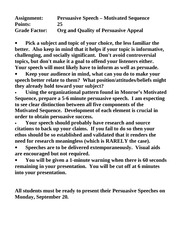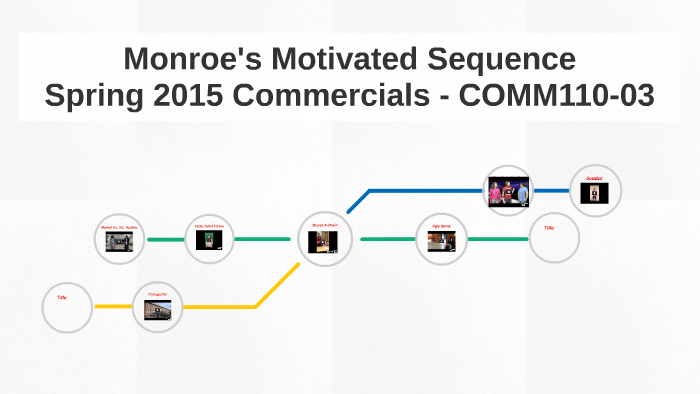
You have to give your audience a list of specific things they can do to change the situation. The final step to achieve is actualization. Then talk about the scenario where the audience does take action, and how positive it will be in contrast. Or you can present the picture that nobody wants – the future of not taking action. You can show them what will happen if they do act. You can show them what will happen if they don’t act. Only when you can make your audience clearly visualize the solution and how it’s going to work is your speech going to pay off.

Now you need to persuade the audience that this solution is the right one to help them meet their need. So, to summarize so far, you have grabbed the attention of your audience, made them see there are a need and a solution. Explain it in detail and show the listeners how the solution works. You have to clearly state what you want the audience to do. Be prepared for objections, and counter them without being asked. You’re trying to make it clear that the audience can be satisfied by meeting the needs that you’ve described.Ĭlearly present examples, statistics and testimonials that support the solution. Remember, you’re not trying to satisfy your audience that there’s a solution. Now you can go ahead and discuss the facts and offer your solutions. Most of us have limited resources that we’d only like to use to fight for causes that affect us.Īt this stage of your presentation, you want your audience to squirm in their chairs. Only activists fight for the causes of others.

Most importantly, make your audience see how they are directly affected by the problem. Find out the ingredients that you think are harmful, and project a picture of what harm they can cause in the long term. Is the college cafeteria serving food that you believe is not as healthy as it can be? Do a little research. Tell them that two out of five women are sexually harassed every week, and the audience will sit up.Īnother way to convince people that there’s a problem is to talk about the consequences of letting things be as they are. Tell people that sexual harassment in the classroom is reaching high levels, and people will nod and agree. Statistics, for instance, are very convincing. There are a few elements that are known to work with audiences. That something needs to be done because there’s a problem. Now that you have your audience’s attention, you need to convince them that the way things are can’t go on forever. You can also use rhetorical questions, a shocking statistic or humour to get the audience to take notice. Such a story won’t always hold the attention of those on the hunting club (although many animal lovers are also hunters and vice versa.) Your stories should also be curated to fit the audience.įor instance, are you trying to convince a group of people to help you clean up the beach in town? Convince a group of animal lovers with a story of how a dolphin came up entangled in plastic. In this opening, you’re essentially telling people why they should listen to you, what gives you credibility and authority to speak on the subject. It’s a part of the introduction to your presentation or speech. Storytelling is a very effective way to open. Just as the opening line of a book can win or lose the reader, the opening of your speech or presentation will determine how many people actually listen to what you say and how many zones out. When you carefully break down these speeches, what do you see? The speaker has probably used some every specific element to catch your attention in the first few seconds and hold it.


This step is intuitive, and you may realize that the best speeches you’ve heard hold your attention right from the beginning. Step One: Use Whatever It Takes to Grab Attention You can use these steps in a variety of situations, to achieve the results that you want. And there’s no better place to practise than in college. The five-step sequence may make life a lot easier for you in your academic life and in the boardroom beyond. His work in the twenties is still popular now because it is effective and functional.
#Monroe sequence series#
Monroe came up with a series of steps to go through in order for a speech to be persuasive. Advertisement What is Monroe’s Motivated Sequence?Ī Purdue University Professor Alan H. Now you can learn to use it yourself in your speeches and presentations, and get people to take action instead of just nodding along in inspired agreement.


 0 kommentar(er)
0 kommentar(er)
